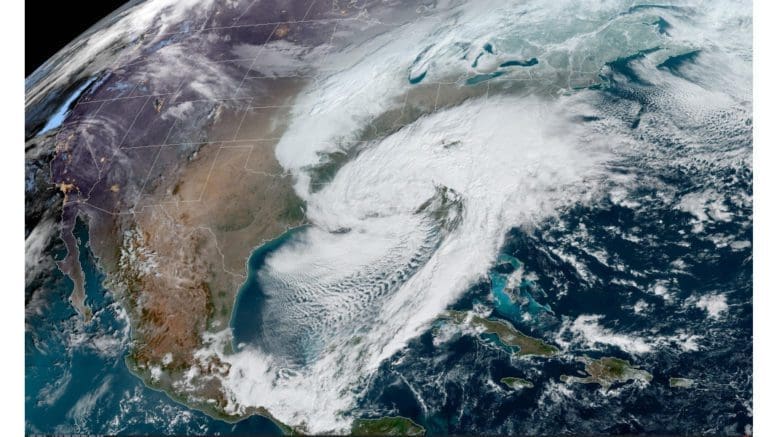We generally focus on the weather in our Cobb County area, but the wintry weather and high winds are part of a much larger storm that’s moving across the eastern United States and heading northwestward toward Canada.
The National Weather Service posted the following Short Range Forecast Discussion that gives an overview of what’s happening nationally between now and next Tuesday, January 18:
Short Range Forecast Discussion
..Heavy Snow for parts of the Central/Southern Appalachians, Lower Great Lakes/Ohio Valley, Mid-Atlantic, and the Northeast on Sunday... ...Significant rain/freezing rain for parts of the Mid-Atlantic and the Central/Southern Appalachians; Light rain/freezing rain for parts Northeast on Sunday... ...Some heavy rain, strong thunderstorms, and high winds can be expected to impact the coastal sections of the southern Mid-Atlantic and Southeast Coast Sunday into Monday... A strong storm over the Southeast/Southern Appalachians will move northeastward inland from the coast to Southeastern Canada by Tuesday. The system will produce rain, thunderstorms, snow, and rain/freezing rain from the Lower Mississippi Valley to the Southeast/southern Mid-Atlantic, Sunday. Heavy snow will extend from the Tennessee Valley, Central/Southern Appalachians, and parts of the Mid-Atlantic, with significant rain/freezing rain over parts of the Southeast, Central/Southern Appalachians, Mid-Atlantic from Sunday morning to Sunday evening. From Sunday evening into Monday morning, heavy snow will extend into parts of the Ohio Valley, Lower Great Lakes, and Northeast. Also, rain/freezing rain will move into parts of the northern Mid-Atlantic and Northeast. Furthermore, the rain will move into parts of the northern Mid-Atlantic and Southern New England overnight Sunday. On Monday, as the storm moves across the Northeast, the rain will develop over the coastal regions of Maine with heavy snow inland. Light snow will linger over parts of the Central/Southern Appalachians into the Northeast by Monday evening into Tuesday. The heavy snow will end overnight Monday over Maine. The combination of snow and ice may cause hazardous road conditions during and after the storm. Meanwhile, a boundary over Central Canada will move into the Upper Midwest by Sunday evening. The system will produce light snow over parts of the Upper Mississippi Valley and the Upper Great Lakes for Sunday and begin to wane by Monday evening. By Tuesday morning, a wave of low pressure over the Northern High Plains will move into the Northern Plains. Light snow will develop across the parts of the Northern Rockies and Northern High Plains into the Northern Plains overnight Monday into Tuesday morning. The snow will result in reduced visibility and hazardous driving conditions. Weak onshore flow and approaching upper-level energy will develop light rain and higher elevation snow over parts of the Pacific Northwest Monday evening into Tuesday. Moreover, upper-level energy will move over California producing scattered areas of rain Monday evening into Tuesday.
